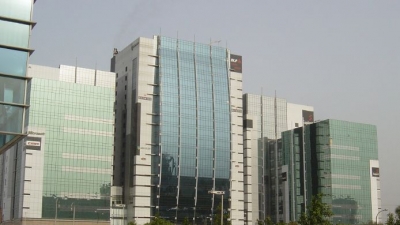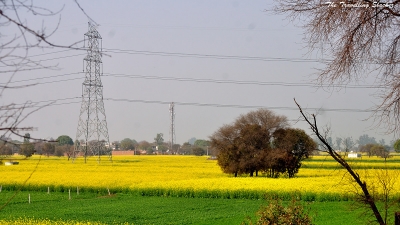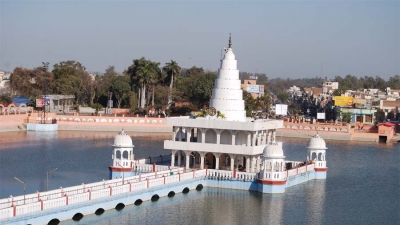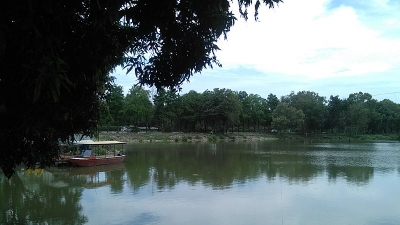Hisar Attractions - Tourist Places To Visit In Hisar
-
01Fort Of Prithviraj
 + Read More
+ Read MoreAlso known as Prithviraj ka Quila, Fort of Prithviraj is located in the city of Hansi in the Hisar district. As the name suggests, the fort was built by the famous Rajput warrior of the same name in the 12th century. It was rebuilt by George Thomas in 1798 when he made Hansi the capital of his kingdom comprising Hisar and Rohtak.
The fort was converted into a cantonment by the British army when it vanquished George Thomas. It was, however, abandoned by them during the 1857 revolt. The square-shaped fort, sprawling over an area of 30 acres and surrounded by a 52 ft high and 37 ft thick wall, was one of the strongest forts in ancient India.
A mosque was later built in it after the defeat of Prithviraj Chauhan. The gates of the forts are carved with beautiful images of Hindu gods and goddesses as well as birds and animals. Firoz Shah Tughlaq later on built a tunnel connecting Hansi with Hisar for strategic reasons.
The fort also houses the idols of Lord Buddha and Lord Mahavir. Fifty seven Jain idols made of Ashtadhatu were recovered during the 1982 excavation. It was declared a Protected Monument of National Importance by the Archaeological Survey of India 1937.
-
02Firoz Shah Palace Complex
 + Read More
+ Read MoreLocated in Hisar, Firoz Shah Palace Complex was built by Firuz Shah Tughlaq in 1354 AD. The original town of Hisar consisted of a walled settlement inside the fort which had four gates, Delhi gate, Mori gate, Nagauri gate and Talaqi gate.
The palace houses a mosque by the name of Lat ki Masjid. It is built of sandstone pillar about 20 ft high. The complex also has underground apartments and also a Diwan-e-Aam. Then there is another palace by the name of Gujri Mahal which is located nearby. This palace was also built by Firoz Shah for his wife Gujri.
It is believed that Gujri was the mistress of the emperor. He asked her to accompany him to the throne of Delhi, which she refused. He then built her a temple in Hisar with his temple nearby. The construction of Gujri Mahal was completed in 1356. The palace stands on a massive rectangular platform. The complex has been declared as a Centrally Protected Monument by the Archaeological Survey of India.
-
03Agroha Dham
+ Read MoreAgroha Dham or Agroha Temple, as the name suggests, is located in Agroha, a village in district Hisar. Its construction started in 1976 and was completed in eight years in 1984. The temple complex is divided into three sections. While the central section is dedicated to goddess Mahalaxmi, also the main deity of the shrine, western and the eastern sections are dedicated, respectively, to goddess Saraswati and Maharaja Agarsen, the ruler of Agroha state some three thousand years back.
A big pond named Shakti Sarovar is located at the back of the temple. The pond was consecrated in 1988 with waters brought from 41 holy rivers in India. A podium built on its North-Western side displays the mythological scene of Samudra Munthan or the great churning of the ocean by gods and demons.
The temple also hosts a naturopathy centre for the treatment of the patients through yoga and allied therapies. The temple celebrates a festival, Agroha Maha Kumbh every year on the occasion of Sharad Purnima.
-
04St. Thomas Church
+ Read MoreLocated on the National Highway No.10 in the city of Hisar in Haryana, St. Thomas Church was built in four years starting from December 1860 to May 1864. It was dedicated to St. Thomas, one of the twelve disciplines of Jesus Christ. Its construction in those times cost Rs. 4500. The holy shrine was consecrated on 31st December 1865 by the Bishop of Calcutta, George Edward Lynch Cotton.
The design and construction of the church imbibes the main features of Victorian style architecture. The church houses an altar, a pulpit for sermons, a vestry and a baptistery for baptizing the Christians by giving them names. The pulpit is decorated with velvet curtains.
The main hall of the church, enclosed by 2 ft thick walls, is built over an area of 1325 sq m and can seat approximately 40 people. The church bell was built in Roorki in 1874. The premise of the church also houses a graveyard situated close to its gate.
The grave of John Wedderburn, the then collector of Hisar, who was killed along with his family by Indian soldiers in 1857, is also located here. Admission for worship in the shrine remained restricted to Christians only until, 1899. Rev. F.R. Willis, the Bishop of Delhi performed the centenary service of the church on January 8, 1966.
-
05Lohari Ragho
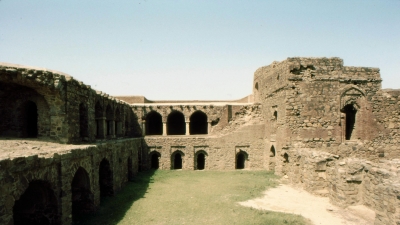 + Read More
+ Read MoreLohari Ragho, a large historical village, is located approximately 52 km in the east of the city of Hisar. The village is home to three historic mounds whose roots can be traced to the Sothi-Siswal ceramic period. The mounds were excavated in 1980 by Dhoop Singh and Chanderpal Singh, officials of the Department of Archaeology and Museums, Haryana.
The duo discovered the archaeological remains of the Harappan period in form of ceramics of those times. The ceramic articles discovered included vases, globular jars, basins, bowls and fast wheel pottery creations made of red ware. These artefacts are reminiscent of the black and red ware culture of early Iron Age in the northern region of the Indian subcontinent.
According to archaeologists these findings date back to post Rigvedic civilization that existed approximately during the 12th to 9th century BC. Lohari Ragho also hosts of some religious monuments and temples including Dargah, Baba Bakshan Shah located on pond in the village, Gurudwara Kamboj Sabha, Gurudwara Banda Bahadur and several shrines such as Shiv Mandir, Baba Balak Nath Temple, Sanatan Dharam Mandir and some old mosques.
-
06Ancient Gumbad
 + Read More
+ Read MoreAncient Gumbad is, in fact, a tomb of a spiritual teacher, Baba Pannir Badshah who lived in the 14th century A.D. One of his disciples, Sher Bahol, also known as Dana (sagacious) Sher was also a reputed saint. He predicted that Ghayas-ud-din Tughlak would ascend the throne of Delhi. The prophecy came true.
Located in the centre of Hisar city, the square tomb has arched openings on all its four sides. The lower half portion of the tomb is built with blocks dressed kankar stone. The upper half is made of lakhauri bricks. The roof of the tomb is ringed by a low dome which sits on an octagonal drum. The memorial has been declared as a protected monument by the Government of Haryana.
-
07Agroha Mound
 + Read More
+ Read MoreAlso called ‘Ther’ in the local dialect, Agroha Mound is an archaeological site. It is named after Agroha where it is situated at a distance of 1.5 km. C.T. Rogers, an archaeologist is credited with having started the excavations of the mound in 1888-89. The work was taken up again in 1978-79 by a team of archaeologists led by J.S. Khatri and Acharya of the Archaeological Department of Haryana.
The historical items discovered are believed to date from 3rd-4th century B.C to 13th-14th century A.D. A total of 7,000 artefacts were found from the site including a defence wall, shrine cells, remains of residential buildings and a host of other items.
The excavators discovered silver and bronze coins of various shapes and sizes belonging to Roman, Kushana, Yaudheya and Gupta periods. They were inscribed with Prakrit notations. Other discoveries included seals bearing Prakrit words and a large number of beads of semi-precious stones, iron and copper implements, stone sculptures, sand idols and artefacts such as masks, terracotta animals, utensils and toys.
Agroha Mound is flanked by a temple complex on one side and Sheela Mata Temple on the other.
-
08Barsi Gate
 + Read More
+ Read MoreBarsi Gate is located in the south of the city of Hansi, 26 km east of Hisar. It is one of the five main entry gates to the city; the other four are Delhi Gate, Hisar Gate, Gosain Gate and Umra Gate.
The imperial gate stands on the outer defence wall of the Hansi Fort in the busy bazar of the city. It used to be an entrance gate to the ancient fort of Hansi in its heyday. The gate bears a Persian inscription on its door that fixes the date of its construction to the year 1304-1305 A.D.
It is also believed that the gate was built by Kilhana, a satrap of the famous Rajput warrior King Prithviraj. Subscribers to this view place the date of its construction to Vikrami Samvat 12224 which corresponds to the year 1167 A.D.
Barsi Gate has been damaged and repaired several times. It was first repaired in 1799 by George Thomas who made Hansi the capital of his fiefdom. It was damaged during the battle between the Marathas and the British forces in December 1801. It was last repaired in 2001.
-
09Rakhigarhi
 + Read More
+ Read MoreRakhigarhi is also known as Rakhi Shahpur in Rakhi Khas which is a village in district Hisar. Its historical importance was discovered through excavations conducted first in 1963 and again in 1997 by the Archaeological Survey of India.
The village is currently located on the bed of what once was Saraswati river which is believed to have dried up around 2,000 B.C. It was a flourishing city and a part of the Harappan and Indus Valley Civilizations.
The Rakhigarhi historical site is spread over an area of 224 hectares. It is the largest site - even bigger than Mohenjodaro and the most significant archaeological site in the country. The excavations reveal how advanced the Indus Valley Civilization was in those times.
The excavators found brick-lined sewage drains, terracotta statues, bronze artefacts, weights, fish hooks made of copper, seals and needles. Other important discoveries included a bronze vessel embellished with gold and silver, a gold foundry containing around 3,000 semi-precious stones, a burial site with 11 skeletons, terracotta bangles, conch shells, gold jewellery and many more items, some of them more than 5000 years old.
-
10Durgah Char Qutab
 + Read More
+ Read MoreDurgah Char Qutab, or the mausoleum complex of four celebrated Sufi saints, is located in Hansi near Hisar. The word ‘qutab’ means a saintly person who is an ideal for other people to follow. The great sufi saints or qutabs buried here are Jamal-ud-Din Hansi, Burhan-ud-Din, Qutab-ud-Din Manuwar and Nur-ud-Din.
The tombs of several other Muslim dignitaries of that period including Mir Alam, Begum Skinner and Mir Tijarah, the chief surveyor of Sultan Hamid-ud-din of Hansi are also located in the durgah. The tombs were initially located near a small mosque in the city, but later on a larger mosque was built by Firoz Shah Tughlaq on the northern side of the durgah.
It is believed that the monument was constructed at this place because the celebrated Sufi saint Baba Farid used to pray and meditate here.



 Click it and Unblock the Notifications
Click it and Unblock the Notifications



